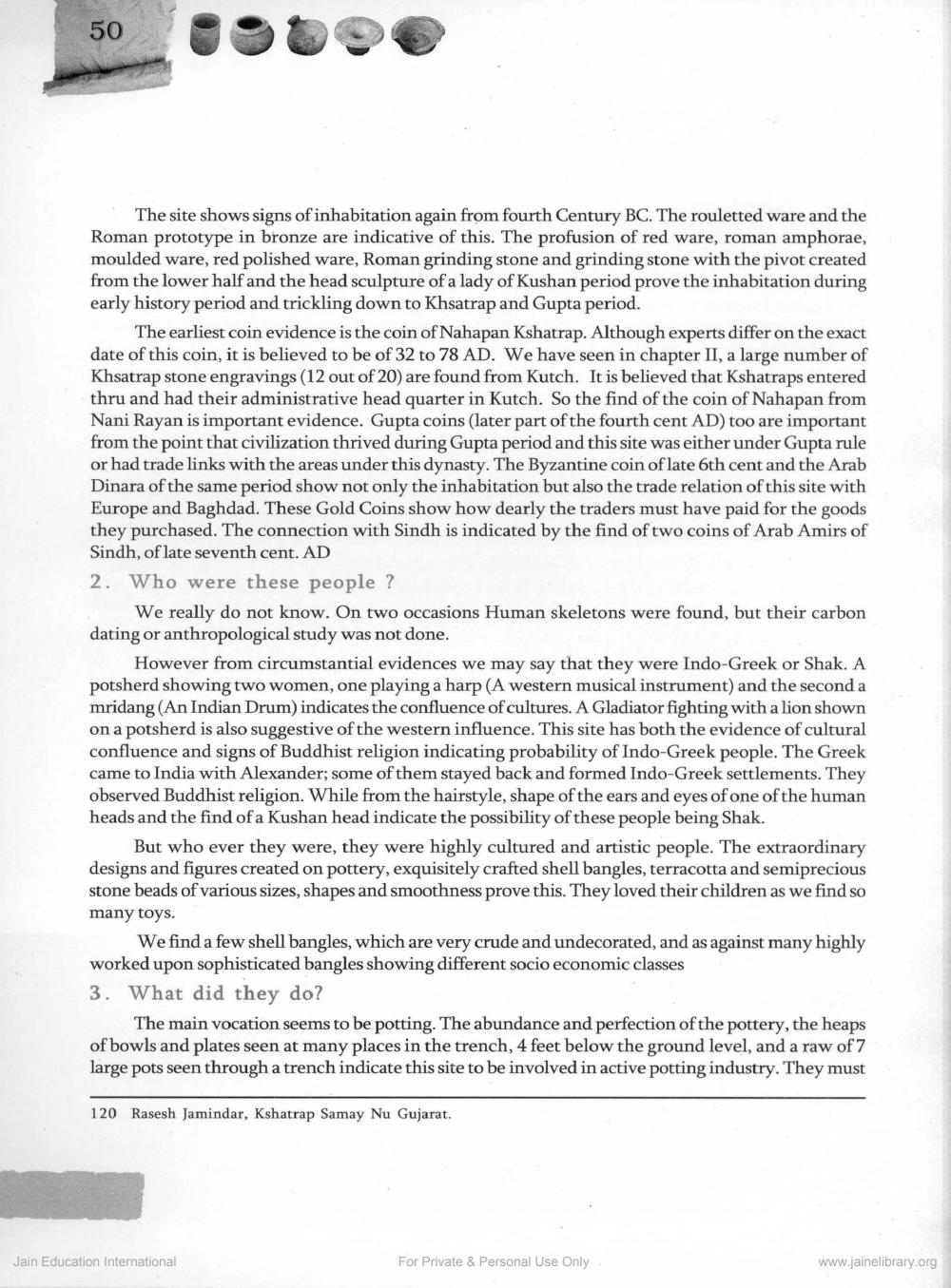________________
50
100
The site shows signs of inhabitation again from fourth Century BC. The rouletted ware and the Roman prototype in bronze are indicative of this. The profusion of red ware, roman amphorae, moulded ware, red polished ware, Roman grinding stone and grinding stone with the pivot created from the lower half and the head sculpture of a lady of Kushan period prove the inhabitation during early history period and trickling down to Khsatrap and Gupta period.
The earliest coin evidence is the coin of Nahapan Kshatrap. Although experts differ on the exact date of this coin, it is believed to be of 32 to 78 AD. We have seen in chapter II, a large number of Khsatrap stone engravings (12 out of 20) are found from Kutch. It is believed that Kshatraps entered thru and had their administrative head quarter in Kutch. So the find of the coin of Nahapan from Nani Rayan is important evidence. Gupta coins (later part of the fourth cent AD) too are important from the point that civilization thrived during Gupta period and this site was either under Gupta rule or had trade links with the areas under this dynasty. The Byzantine coin of late 6th cent and the Arab Dinara of the same period show not only the inhabitation but also the trade relation of this site with Europe and Baghdad. These Gold Coins show how dearly the traders must have paid for the goods they purchased. The connection with Sindh is indicated by the find of two coins of Arab Amirs of Sindh, of late seventh cent. AD
2. Who were these people ?
We really do not know. On two occasions Human skeletons were found, but their carbon dating or anthropological study was not done.
However from circumstantial evidences we may say that they were Indo-Greek or Shak. A potsherd showing two women, one playing a harp (A western musical instrument) and the second a mridang (An Indian Drum) indicates the confluence of cultures. A Gladiator fighting with a lion shown on a potsherd is also suggestive of the western influence. This site has both the evidence of cultural confluence and signs of Buddhist religion indicating probability of Indo-Greek people. The Greek came to India with Alexander; some of them stayed back and formed Indo-Greek settlements. They observed Buddhist religion. While from the hairstyle, shape of the ears and eyes of one of the human heads and the find of a Kushan head indicate the possibility of these people being Shak.
But who ever they were, they were highly cultured and artistic people. The extraordinary designs and figures created on pottery, exquisitely crafted shell bangles, terracotta and semiprecious stone beads of various sizes, shapes and smoothness prove this. They loved their children as we find so many toys.
We find a few shell bangles, which are very crude and undecorated, and as against many highly worked upon sophisticated bangles showing different socio economic classes 3. What did they do?
The main vocation seems to be potting. The abundance and perfection of the pottery, the heaps of bowls and plates seen at many places in the trench, 4 feet below the ground level, and a raw of 7 large pots seen through a trench indicate this site to be involved in active potting industry. They must
120 Rasesh Jamindar, Kshatrap Samay Nu Gujarat.
Jain Education International
For Private & Personal Use Only
www.jainelibrary.org




